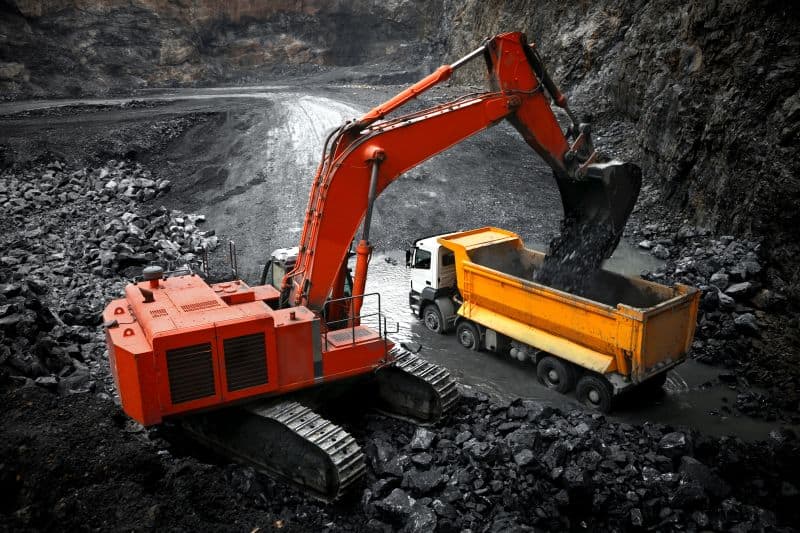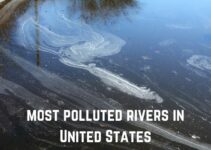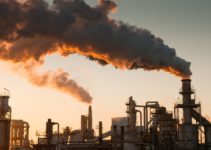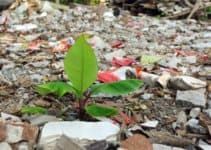Water is integral to human existence — we need it for everything. Drinking, cooking, bathing, cleaning, irrigation… It’s impossible to come up with an all-inclusive list of uses of water in our everyday life.
And with all these uses, one thing is apparent — we need to protect our water bodies because that’s our only water supply.
But unfortunately, we’ve got so many factors threatening our environment, and their effects have even infiltrated our water systems.
A classic example of these factors is mining. Mining requires several processes, some harmful to living creatures and our natural resources, such as water.
In this blog post, we’ll examine what mining pollution is, what causes it, the effects, and viable solutions to it.
Let’s get started!
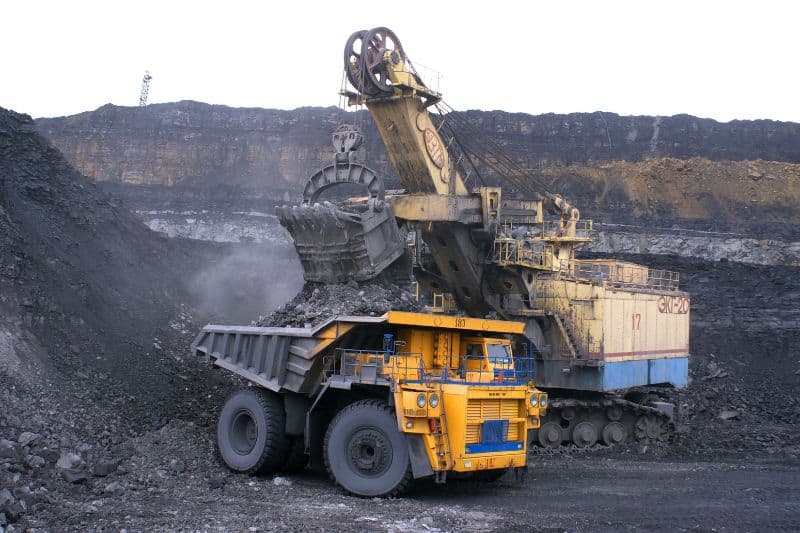
Explaining Mining Pollution
Mining is an industrial activity whereby companies or the government extract precious materials we can’t usually find on land. Removing these minerals from the earth requires fossil-fueled machinery, chemicals, and a host of other materials.
Mining is one of the significant contributors to our economy, as the materials we extract from mines can be used to make different materials — gold and diamond being perfect examples.
These materials are used in a plethora of applications, including making jewelry and other consumables. These products are then sold, and a percentage of the price is channelled to the government as taxes.
Disrupting the natural system becomes inevitable during the mining process, because miners have to drill holes, expend chemicals, and other functions. Once extracted, the precious materials are separated from the ore, a process that requires chemicals such as sulfur or cyanide — both acidic elements.
But unfortunately, these acids sometimes spill, finding their way to our water bodies and sometimes land. That puts humans, animals, plants, and other organisms in danger, especially when they come in direct contact with them.
They can result in poisoning, affect the lungs, stomach, and intestine, and neurological conditions.
In addition, wildlife is most at risk because they aren’t aware they may be contacting acids and have no hospital to report to in the case of poisoning.
Since the significant recipient of mining pollution is our water bodies, aquatic creatures are at the greatest risk. The chemicals that spill into the water bodies make it unsafe for marine animals to consume the water or make it unhealthy when it comes into contact with their bodies.
Various Causes of Mining Pollution
There are many causes of mining pollution. Some of them include the following:

1. Technological Advancement
Technological advancement has a serious role to play in mining pollution. Before the advent of technology, miners had to resort to conventional methods of extracting mined materials from the ore, and these methods had little to no effect on the environment.
Of course, this method was cumbersome and inefficient, making mining a less attractive practice. But with machines making work easier and bringing efficiency, mining has become rampant.
Plus, items like cell phones, automobiles, and other products have also been a great contributor to mining. That’s because these products rely heavily on materials found in the earth, such as copper, silver, gold, and platinum, to name a few.
The more technology advances, the more we’ll have to mine the ground for more materials, and it gets worse that these materials have no close substitutes.
2. Heavy Contribution to Government Revenue
Another cause of mining pollution is its huge contribution to government revenue. The government may be in charge of mining a certain area, or it could be the duty of a particular company.
If the former is the case, the income from selling the extracted materials or turning them into products consumers need will go to the government. On the other hand, when private individuals mine and extract precious materials, they pay a percentage to the government.
Alternatively, they could also pay their taxes when they receive the income from selling the products created. So, you see why the government and organizations rely on mining. There’s a steady source of income in it, which results in an unquenchable thirst to engage in more mining activities.
3. Lack of Sufficient Substitutes for Mined Materials
This is a problem we have to battle with, unfortunately. The materials we extract from mines have little to no close replacements. So, we cannot halt extraction because these materials have become necessities.
A good example is our cell phones. The world has become so reliant on cell phones for communication, finding information, and just about anything. You need a cell phone to reach out to people, buy food and material items, and do a host of other activities, which means it’ll be challenging to stop the production of this item.
Another item is the computer. The same goes for other gadgets. We’ve become so reliant on them that we simply cannot do without them. This births a constant need for mining as there are currently no materials we can use to replace them.
Let’s also consider jewelry. Everyone loves and uses jewelry, at least in one way or another. Of course, we have wristwatches, which are indispensable for keeping track of time. There are also neckpieces, rings, bracelets, and any other accessories you can think about.
Most of them are made from precious materials extracted from mines. We can’t replace them with substitutes, so mining activities can’t stop in this regard.

4. Increase in Demand
Mining can’t stop because of the increase in demand for the materials that we mine. Of course, the demand isn’t for the raw materials but rather the manufactured ones.
Sometimes, you may be unaware that a product is made from precious materials or has materials that need to be mined in it. A good example is your computer, which has some element of gold in it. The same goes for cell phones containing copper, platinum, and other extracted materials.
The more obvious ones, like jewelry, are also in high demand, particularly wedding rings, as people get married every day.
5. Increase in Population Growth
Population growth automatically means an increase in demand for goods and services. So, as the population grows, there’ll be an increase in the demand for cell phones, computers, gadgets, jewelry, and other products that need mined materials for their production.
Since we cannot halt population growth, alternatives must be provided to reduce mining pollution. However, before we discuss the solutions to mining pollution, let’s explore its effects on the environment.
Serious Effects of Mining Pollution
It’s no secret that mining pollution negatively impacts the environment – the water bodies, the atmosphere, and the land itself.
So, some of the effects of mining pollution include:

1. Respiratory Problems
The mining process involves drilling through the earth, an activity that results in the release of dust in large quantities. When you inhale large amounts of dust repeatedly and over time, you may find yourself with black lung disease. It’s also known as a coal worker’s pneumoconiosis, affecting your breathing ability.
It could take long years to become effective, starting with tightness, shortness of breath, and cough. It’s, however, incurable.
People living around mining areas can be susceptible to mining pollution because they’re constantly exposed to dust and other chemicals expelled when separating precious materials from ore.
2. Results in Severe Injuries and Sometimes Death
It’s not unheard of for mines to cave in because of excessive drilling. When that happens, it can cause severe injuries to anyone who’s caught in the cave.
Sometimes, these miners get stuck under the cave-ins and die when they don’t get help immediately. Slips and falls in mines are also responsible for 25% of mining injuries.
3. Harmful to Humans and Wildlife
It’s also general knowledge that mining activities are dangerous to humans and wildlife. They cause respiratory problems for humans and can result in severe injuries and death when mines cave in or when miners come into contact with sulfur or cyanide.
In addition, these separation chemicals can also spill and find their way to our water bodies, which is very deadly for aquatic creatures. A few drops may have no effect, but they can be fatal to marine animals when the spill is continuous and in large quantities.
Wildlife, too, isn’t spared. They reside on land, so when toxic fumes are released from the sulfur and cyanide, wildlife can also inhale them, and they have lesser chances of recovering or fighting these chemicals. They can also inhale too much dust from the caves, resulting in respiratory problems.
Humans may also have to battle with problems like cancer, organ damage, and other severe conditions due to constant closeness to active mines.
4. Water Pollution
As we mentioned earlier, mining is one of the banes of water pollution. Sometimes, the waste from these mines finds its way to our water bodies. And while this may not be problematic in small quantities, it can be dangerous when more frequent.
But that’s not all, as there are more troubles with using these chemicals. For example, sulfur and cyanide are dangerous for any living thing, and when they accumulate in large quantities, you can imagine the effect they’ll have on our water. They can render the water bodies poisonous.

5. It Affects Our Vegetation
Our vegetation also isn’t spared from mining pollution. Typical KYC mining pollution involves expulsing heavy metals, which very few plants can withstand. So, this destroys both the soil and our vegetation.
Amazing Solutions to Mining Pollution
Thankfully, there are several viable solutions to mining pollution. Some of them are:
1. Proper Waste Disposal
The disposal of the chemicals miners use to separate the ore from the extracted materials should be appropriately taken care of. We should also ensure that no spillages could sneak into the atmosphere, land, or water bodies.
Manufacturers should ensure that the containers are well sealed, and the content can only come out when sufficient force is applied.
2. Proper Site Inspection
Thorough site inspections are crucial to prevent potential cave-ins while miners are underground.
Mine administrative authorities must also furnish miners with appropriate respiratory equipment to safeguard them from dust and potential chemical hazards within the mines.
3. Afforestation
Afforestation is another way to ensure that mining pollution is reduced drastically. Trees and plants are natural protectors, and they’ll stand between our water bodies and mines to ensure that the spillages that occur don’t make it to water bodies.
Afforestation is also excellent for replenishing our oxygen supply, and the more tree we have, the safer the air we take in becomes.
Conclusion
Many factors threaten to destroy the environment, and a major one is mining pollution. It affects not just humans but also wildlife and the environment. As such, it’s essential to consider the causes, effects, and possible solutions to this pandemic.
